Geometry Homework Practice Workbook 1st Edition Chapter 1 Points Lines and Planes
Page 11 Problem 1 Answer
The given diagram is,
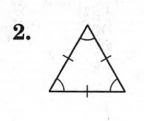
The polygon has 3 sides and a polygon with 3 sides is a triangle.
None of the lines containing the sides will have points in the interior of the polygon.
So, the polygon is convex.
All sides and all angles are equal in the polygon, so it is regular.
The polygon is a triangle, convex and regular.
Page 11 Problem 2 Answer
The given diagram is,
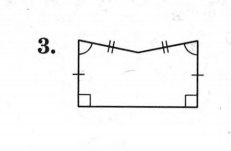
The polygon has 5 sides and a polygon with 5 sides is a pentagon.
Some of the lines containing the sides will have points in the interior of the polygon.
So, the polygon is concave.
Some angles and sides are not equal to each other in the polygon, hence it is irregular.
Therefore, the polygon is a pentagon. And it is concave and irregular.
Page 11 Problem 3 Answer
The given diagram is,
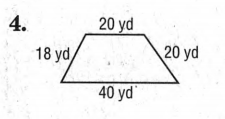
To find the perimeter of the figure, we have to add all lengths of the sides.
So, the perimeter of the figure =(18+20+20+40)yd.=98 yd.
Therefore, the perimeter of the figure is 98 yd.
Page 11 Problem 4 Answer
The given diagram is,
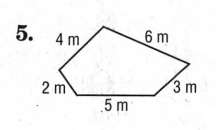
To find the perimeter of the figure, we have to add all lengths of the sides.
So, the perimeter of the figure =(4+6+3+5+2)m.=20m.
Therefore, the perimeter of the figure is 20 m.
Page 11 Problem 5 Answer
The given diagram is,
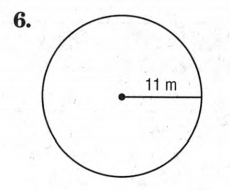
To find the circumference of the figure, we have to use the formula 2Πr where r is the radius of the figure.
So the circumference of the figure =2×Π×11 m.
= 22×Π m.
Therefore, the circumference of the figure is 22×Π≈69.115.
Page 11 Problem 6 Answer
The given diagram is,
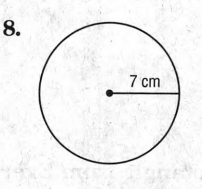
The area of the circle =Π×r2sq.cm.
= Π×72 sq. cm.
= 49Π sq. cm.
The area of the figure is=49Π sq. cm.
≈153.93 sq. cm.
Page 11 Problem 7 Answer
The given diagram is,

In the figure, the height of the triangle is 14 ft.
and the base of the triangle is 16 ft.
The area of the triangle is =1/2×(height of the triangle)×(base of the triangle) square unit.
=1/2×14ft. × 16ft.
=7×16ft. 2
=112ft. 2
Therefore, the area of a triangle is 112 ft.2
Page 11 Problem 8 Answer
Four vertices are given, which are Q(−3,2),R(1,2),S(1,−4),T(−3,−4).
We need to graph each figure with the given vertices and identify the figure, and finally find the perimeter and area of the figure.
This can be found by plotting the points on a graph paper and joining them to find the area and perimeter of the figure formed.
The points have been plotted on the graph and then the points have been joined.
The graph looks like as follows

Here, the x-axis denotes the values of the x coordinate and the y-axis denotes the values of the y-coordinate.
The figure formed is a rectangle.
Length of the rectangle=y2−y1
= 2−(−4)
= 2+4
= 6
Breadth of the rectangle=x2−x1
=1−(−3)
=1+3
= 4
Hence, the perimeter of the rectangle will be,2×(length+width)
= 2×(6+4)
= 2×10
= 20units
Hence, the area of the rectangle will be, length × width
= 6×4
= 24unit2
The figure formed by joining the points is a rectangle. Its perimeter is 20 units and its area is 24 unit2.
Page 11 Problem 9 Answer
We are given 3 different points.
We need to find the figure formed by joining the points given and finally find the area and perimeter of the figure.
This can be formed by plotting the given points on a graph paper and finding the area and perimeter of the figure formed by joining the points on the graph paper.
The given points are plotted on a graph paper and then joined to get the figure.
The graph is as follows.
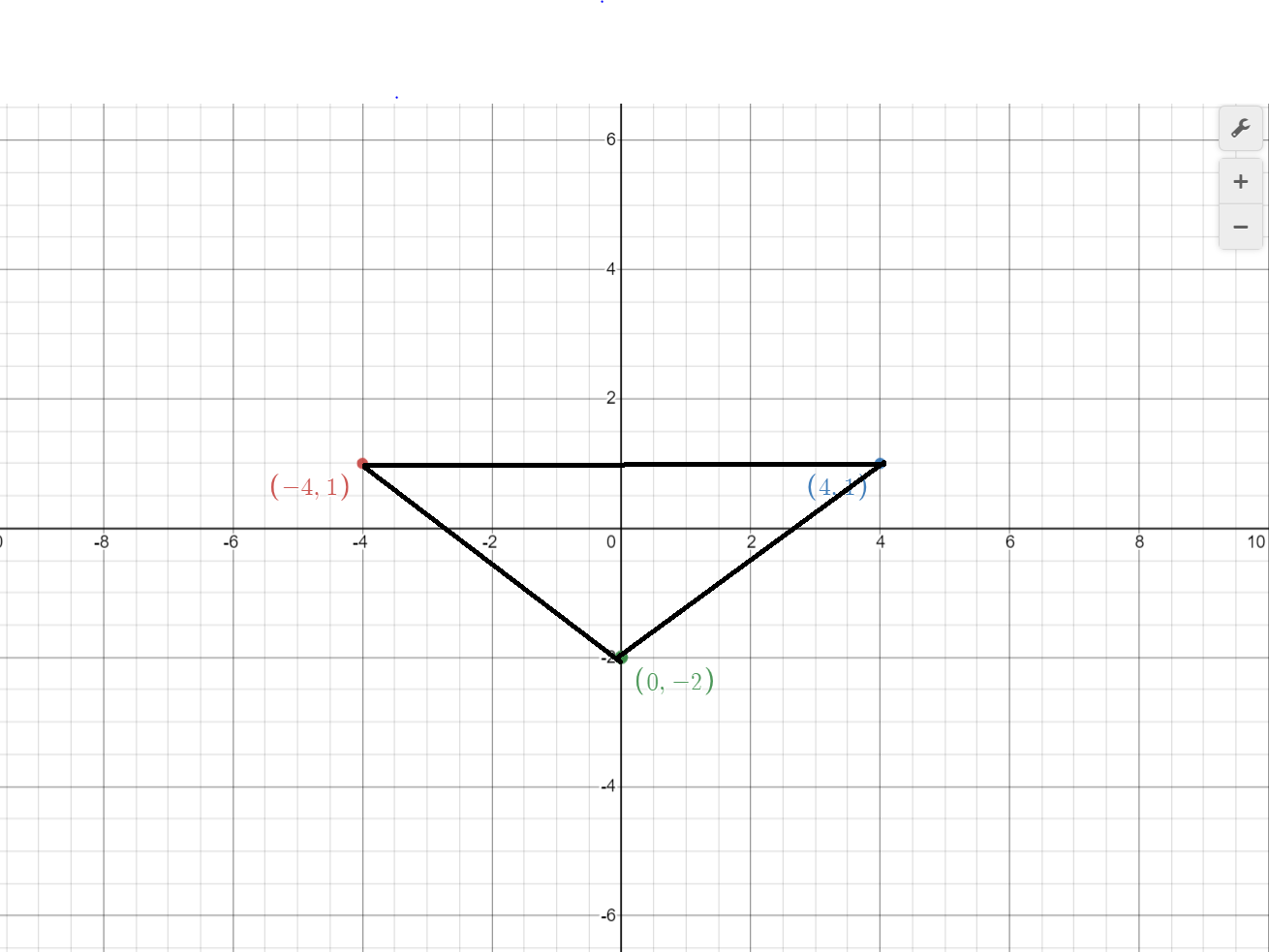
The x-axis denotes the values of the x-coordinates and the y-axis denotes the values of the y-coordinate.
The figure formed is a triangle.
Length of the base of the triangle=4−(−4)=8units
Length of the height of the triangle=1−(−2)=3units
Length of the two sides of the triangle=√42+32,√42+32
(Applying Pythagoras theorem)=5units,5units
Hence, the area of the triangle=1/2×base×height
=1/2×8×3
=12unit2
Perimeter of the triangle=5+5+8=18units
The figure formed is a triangle.
The area of the triangle is 12 units 2 and its perimeter is 18 units.
Page 11 Problem 10 Answer
We are given 4 different points.
We need to find the figure formed by joining the points given and finally find the area and perimeter of the figure.
This can be formed by plotting the given points on a graph paper and finding the area and perimeter of the figure formed by joining the points on the graph paper.
The given points are plotted on a graph paper and then joined to get the figure.
The graph is as follows.
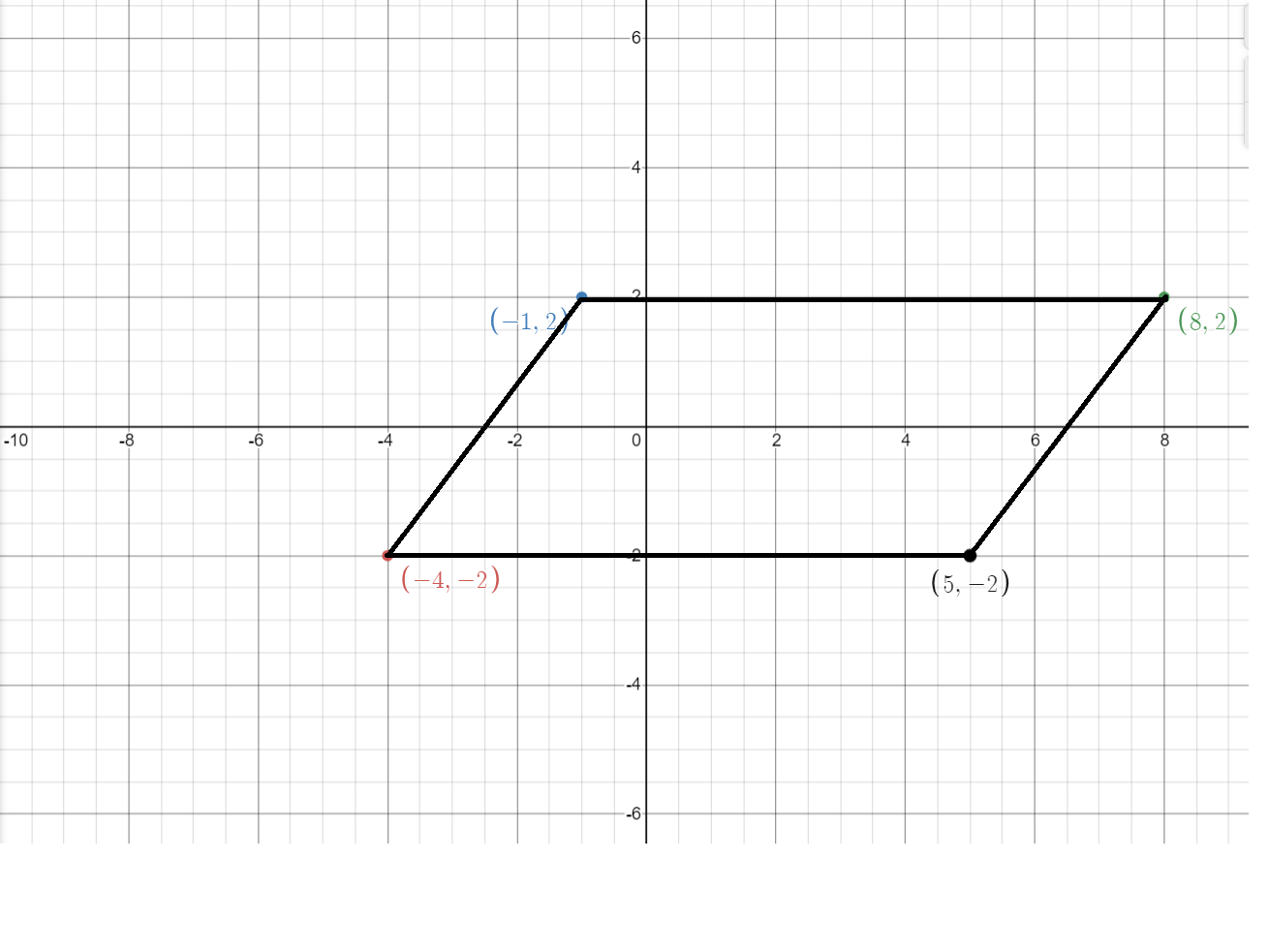
The x-axis denotes the values of the x-coordinates and the y-axis denotes the values of the y-coordinates.
The figure formed is a parallelogram.
The figure formed is a parallelogram.
Page 12 Problem 11 Answer
A figure is given. We need to find that whether the given polygon is concave or convex or regular or irregular.
This can be found by considering the definitions of convex, concave, regular, irregular polygons and comparing that with the figure given.
The given polygon has an angle greater than180o. Hence, it is a concave polygon.
In the given polygon, all the sides or angles are not equal to each other. Hence, it is an irregular polygon.
The given polygon is an irregular, concave polygon.
Page 12 Problem 12 Answer
A figure is given. We need to find the area and the perimeter of the given figure.
This can be found by using the formula to calculate the area and circumference of a circle.
The radius of the circle(r)=7mi
Circumference of the circle=2Πr
= 2×3.14×7
= 43.96mi
= 44mi (rounded to nearest tenth)
Area of the circle=Πr2
= 3.14×72
=153.86mi2
=153.9mi2(rounded to nearest tenth)
The perimeter of the circle is 44mi and the area of the circle is 153.9 mi2.
Page 12 Problem 13 Answer
A figure is given. We need to find the perimeter and area of the given figure.
This can be found by using the formula to calculate the area and perimeter of a triangle
The length of two sides of the triangle=8.1mm
Length of the base of the triangle=8mm
Height of the triangle=7mm
Perimeter of the triangle=(8.1+8.1+8)
= 24.2mm
=20mm (rounded to nearest tenth)
Area of the triangle=1/2×8×7
= 28mm2
= 30mm2 (rounded to nearest tenth)
The perimeter of the triangle is 20mm and the area of the triangle is 30 mm2.
Page 12 Problem 14 Answer
We are given 3 different points.
We need to find the figure formed by joining the points given and finally find the area and perimeter of the figure.
This can be formed by plotting the given points on a graph paper and finding the area and perimeter of the figure formed by joining the points on the graph paper.
The given points are plotted on a graph paper and then joined to get the figure.
The graph is as follows.

The base of the triangle=8−0=8units
Height of the triangle=0−(−2)=2units
The left side of the triangle =√22+32
= √4+9
= √13
=3.6units
The right side of the triangle=√52+22
=√25+4
=√29
=5.38units
The perimeter of the triangle =8+3.6+5.38
=16.98units
Area of the triangle=1/2×base×height
=1/2×8×2
=8unit2
The figure formed is a triangle.
The perimeter of the triangle is 16.98 units and the area of the triangle is 8 unit 2.
Page 12 Problem 15 Answer
The given rectangle is
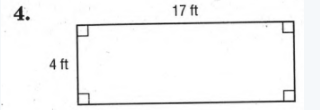
We have to find find the relation between their perimeters if their dimensions are doubled.
We can find the relation between them using the ratio.
Initial PerimeterP=2(17+4) feets
Final Perimeterp=2(34+8) feets
∴P/p=2(17+4)/2(34+8)
⇒P/p
=2(17+4)/4(17+4)
⇒P/p
=1/2
⇒p=2P
We can clearly observe that if the dimensions are doubled then the perimeter is also doubled.
Page 12 Problem 16 Answer
The given rectangle is
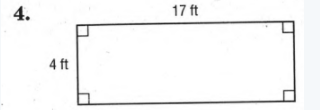
We have to find find the relation between their areas if their dimensions are doubled.
We can find the relation between them using the ratio.
Initial area A=17×4 sq.feets
Final area a=34×8 sq.feets
∴A/a=17×4/34×8
⇒A/a=17×4/2(17×4)
⇒A/a=1/2
⇒a=2A
We can clearly observe that if the dimensions are doubled then the area is also doubled.
Page 12 Problem 17 Answer
The given figure is
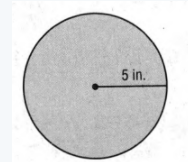
As jasmine wants to sew around the pillow, hence we must find the perimeter.
The perimeter can be calculated using C=2πr.
The perimeter is found to be
C=2πr
⇒C=2π(5)
⇒C=2×3.14×5
⇒C=31.4 inches
The amount of fringe Jasmine needs to use is 31.4 inches.
Page 12 Problem 18 Answer
The new radius of the circle(r) is 2×5 in.=10 in.
Then the new area =Π×r2 sq. in.
=Π×(10)2sq. in.
= 100×Π sq.in.
Therefore, the new area of the pillow is 100Π sq. in. ≈ 314.159 sq. in.
